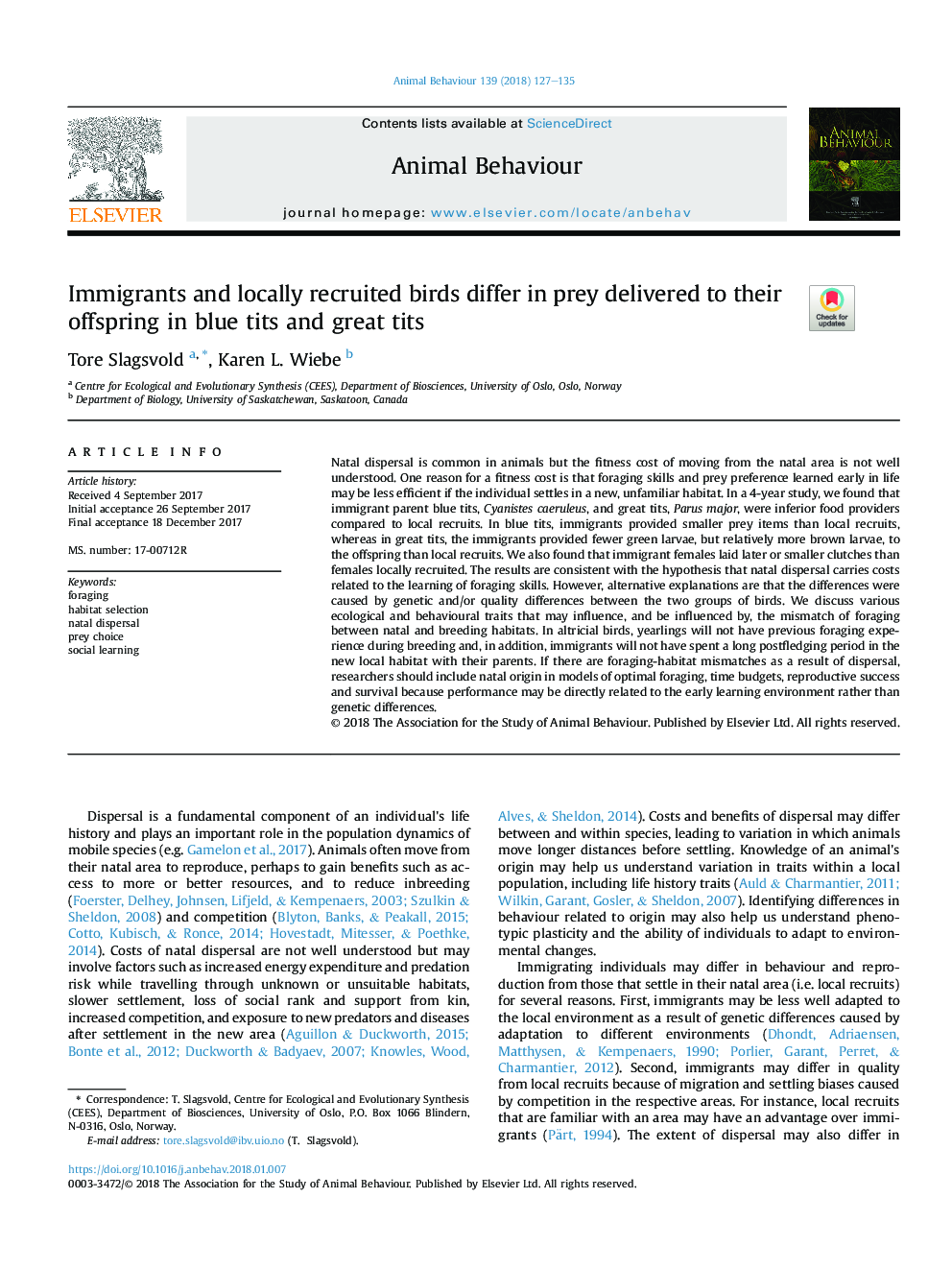| کد مقاله | کد نشریه | سال انتشار | مقاله انگلیسی | نسخه تمام متن |
|---|---|---|---|---|
| 8488569 | 1552189 | 2018 | 9 صفحه PDF | دانلود رایگان |
عنوان انگلیسی مقاله ISI
Immigrants and locally recruited birds differ in prey delivered to their offspring in blue tits and great tits
ترجمه فارسی عنوان
مهاجران و پرندگان محلی استخدام شده در طعمه های مختلف به فرزندان خود در جوانان آبی و جوانان بزرگ تقسیم می شوند
دانلود مقاله + سفارش ترجمه
دانلود مقاله ISI انگلیسی
رایگان برای ایرانیان
کلمات کلیدی
غذا خوردن انتخاب زیستگاه، پراکندگی ناتال، انتخاب شکار، یادگیری اجتماعی،
موضوعات مرتبط
علوم زیستی و بیوفناوری
علوم کشاورزی و بیولوژیک
علوم دامی و جانورشناسی
چکیده انگلیسی
Natal dispersal is common in animals but the fitness cost of moving from the natal area is not well understood. One reason for a fitness cost is that foraging skills and prey preference learned early in life may be less efficient if the individual settles in a new, unfamiliar habitat. In a 4-year study, we found that immigrant parent blue tits, Cyanistes caeruleus, and great tits, Parus major, were inferior food providers compared to local recruits. In blue tits, immigrants provided smaller prey items than local recruits, whereas in great tits, the immigrants provided fewer green larvae, but relatively more brown larvae, to the offspring than local recruits. We also found that immigrant females laid later or smaller clutches than females locally recruited. The results are consistent with the hypothesis that natal dispersal carries costs related to the learning of foraging skills. However, alternative explanations are that the differences were caused by genetic and/or quality differences between the two groups of birds. We discuss various ecological and behavioural traits that may influence, and be influenced by, the mismatch of foraging between natal and breeding habitats. In altricial birds, yearlings will not have previous foraging experience during breeding and, in addition, immigrants will not have spent a long postfledging period in the new local habitat with their parents. If there are foraging-habitat mismatches as a result of dispersal, researchers should include natal origin in models of optimal foraging, time budgets, reproductive success and survival because performance may be directly related to the early learning environment rather than genetic differences.
ناشر
Database: Elsevier - ScienceDirect (ساینس دایرکت)
Journal: Animal Behaviour - Volume 139, May 2018, Pages 127-135
Journal: Animal Behaviour - Volume 139, May 2018, Pages 127-135
نویسندگان
Tore Slagsvold, Karen L. Wiebe,
